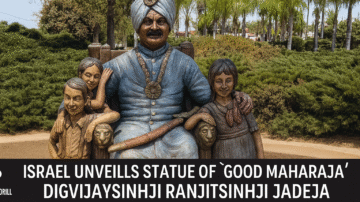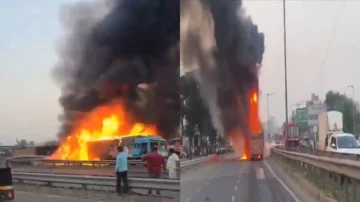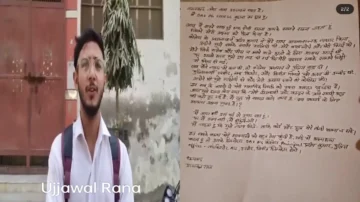
Bengaluru, Karnataka – In a shocking turn of events, the high profile Dharmasthala mass burial case initially suspected to be one of the most gruesome cover-ups in recent Karnataka history is now showing signs of collapsing under the weight of inconclusive evidence. Despite intensive excavations across multiple sites, the Special Investigation Team (SIT) has so far found no female skeletons or forensic confirmation of mass sexual crimes, raising significant doubts over the initial claims.
This emerging reality has ignited intense public debate, challenging the original narrative that Dharmasthala a sacred temple town in Karnataka was the site of mass murders of women and minors over a span of two decades.
Background Explosive Allegations Shook the Temple Town
The controversy erupted in early July 2025 when a former Dalit sanitation worker, who had served at the Sri Manjunathaswamy Temple between 1995 and 2014, alleged that he had been forced to bury or burn hundreds of bodies, mostly women and young girls, some of whom were allegedly subjected to sexual assault and torture before being killed.
He claimed the alleged crimes took place near the Netravathi River and other secluded forest zones surrounding Dharmasthala. This sparked public outrage and political tremors across Karnataka, prompting the state government to constitute an SIT to investigate the matter.
SIT Excavations: 10 Sites, Few Bones, No Women
As of August 3, 2025, the SIT has excavated 10 out of 13 identified locations believed to contain mass graves. Among these:
Site 6 yielded approximately 15 bone fragments.
A PAN card and a debit card were also found, belonging to a man who was confirmed to have died of illness.
Forensic analysis is underway but preliminary reports suggest no link to mass sexual violence or female victims.
The bones discovered thus far appear to be male, and no signs of acid burns, strangulation, or sexual assault central to the original allegations have been confirmed.
This finding casts a cloud over the sensational narrative surrounding the Dharmasthala mass burial case, making it increasingly appear like a false flag operation or, at the very least, an exaggerated account with limited factual basis.
Legal Hurdles and Gag Orders
Adding complexity to the already convoluted case, the Bengaluru Civil Court issued an ex parte injunction in mid July, ordering the deletion of over 8,800 links, videos, and social media posts that were deemed defamatory toward the temple and its administration.
This sparked a heated legal debate. While the Supreme Court refused to intervene in the gag order, freedom of press advocates have challenged it in the Karnataka High Court, citing the public’s right to transparency in such sensitive matters.
In the backdrop of these developments, the Dharmasthala mass burial case continues to dominate digital discourse, fueling both conspiracy theories and demands for data based conclusions.
New Witness and Cold Case Echoes
A new witness, Jayanth T., has emerged claiming that a minor girl was murdered near Dharmasthala around 2010, a case that allegedly went uninvestigated. He has requested the SIT to re-open this old file and cross check the current excavation sites for potential overlap.
Meanwhile, parallels are being drawn with the infamous Soujanya rape murder case of 2012 still unsolved adding another layer of suspicion and emotion to the unfolding drama.
Pilgrimage Town’s Reputation at Stake
Dharmasthala, renowned for its spiritual heritage and social services, is now caught in a whirlwind of allegations and skepticism. Locals and pilgrims alike have expressed concern about the temple town’s global image being tarnished, especially given that no concrete evidence has yet validated the original whistleblower’s claims.
“People come here for spiritual peace, not rumors of buried skeletons,” said a local vendor in a recent media interview.
With the Dharmasthala mass burial case under the spotlight, many residents believe the current developments indicate a possible attempt to defame the temple town for reasons yet unclear.
What Remains to be Found?
The SIT, led by DGP Pronab Mohanty, is continuing its search at the remaining three sites. It has confirmed that all bone fragments are being sent for DNA testing, and the final report will be made public once all forensic validations are complete.
Until then, the truth behind the Dharmasthala mass burial case remains ambiguous balanced precariously between a potentially fabricated horror story and the possibility of a deeply buried criminal conspiracy that has cleverly eluded discovery for decades.
Conclusion
As it stands today, the Dharmasthala mass burial case appears to be losing credibility. With no female skeletal remains, no concrete evidence of mass rape or murders, and forensic clues suggesting natural deaths, the narrative may soon be reframed from one of horror to one of misinformation or political sabotage.
However, with further sites yet to be excavated and DNA analysis still underway, the case cannot be entirely dismissed. The coming weeks will determine whether this was a gross miscarriage of justice waiting to be corrected or a calculated attempt to stain the legacy of one of India’s most revered temple towns.
Stay Connected with The News Drill for more updates. Stay informed. Stay updated. Stay Ahead.
Have information about this case? Submit tips at: editor@thenewsdrill.com
Contact us: contact@thenewsdrill.com












